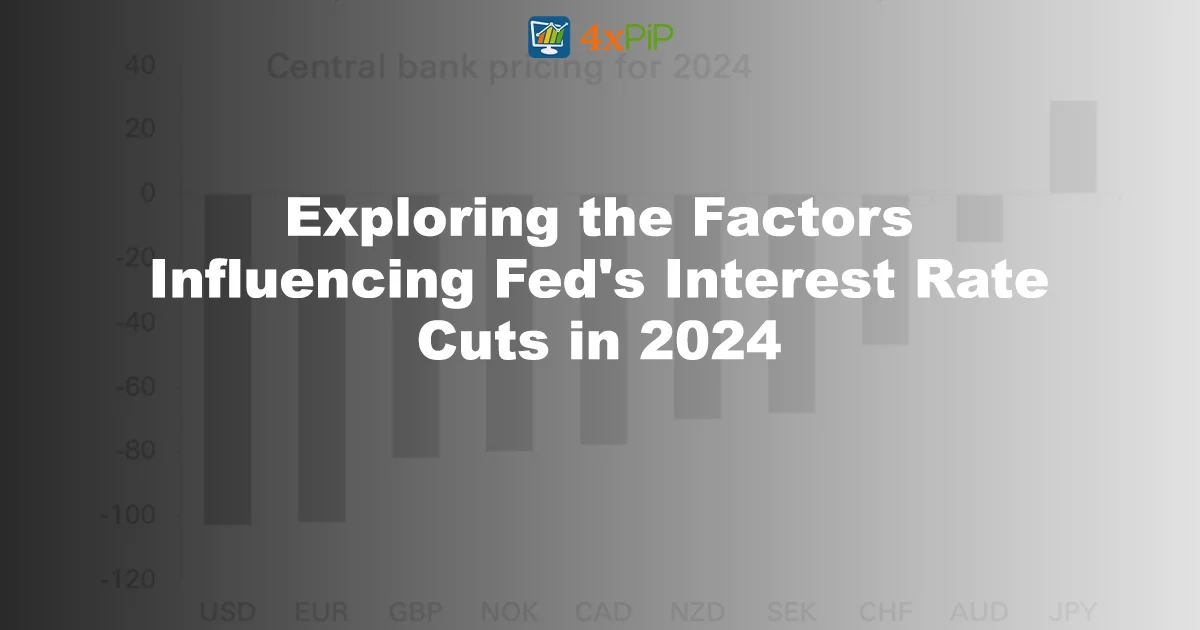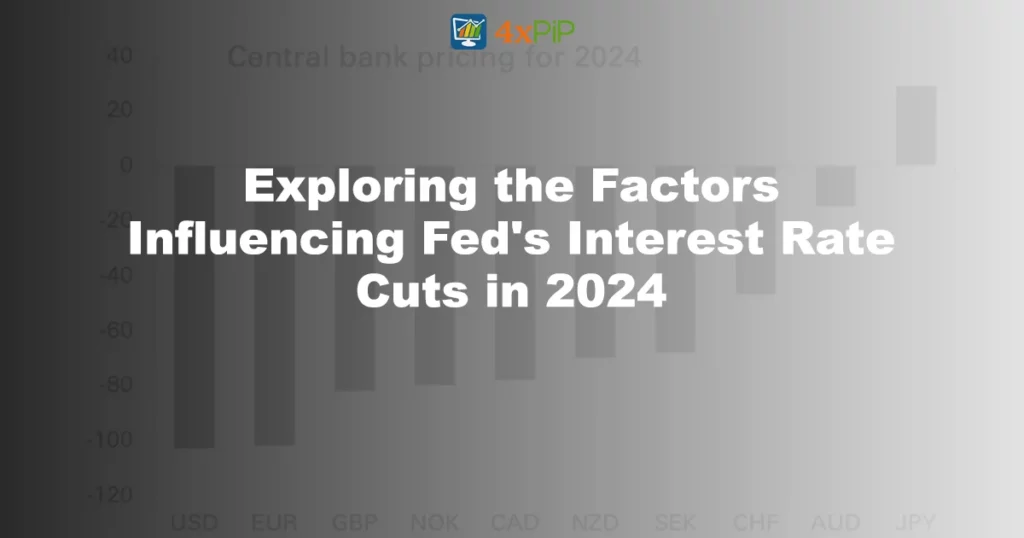In the ever-evolving landscape of financial markets, the potential for interest rate cuts by the Federal Reserve in 2024 has become a focal point for investors and analysts alike. As we delve into the factors influencing this anticipated decision, it’s crucial to navigate the nuanced dynamics shaping the market sentiment, the caution exercised by the Fed in easing, the interplay between hawkish and dovish voices within the central bank, the relationship between economic slowdown and rate cut possibilities, and the risks associated with betting on rate cuts. Additionally, we’ll explore the global context and the potential lag in the Fed’s response. Let’s unravel the complexities surrounding these factors to gain insights into the possible trajectory of monetary policy.
The Current Market Sentiment:
As the financial landscape anticipates potential interest rate cuts by the Federal Reserve in 2024, the market sentiment is characterized by a delicate balance of optimism and caution. Investors are closely scrutinizing economic indicators and policymakers’ remarks to gauge the direction of monetary policy. The recent aggressive pricing in the market, with expectations of multiple rate cuts, reflects a proactive stance by investors. However, caution prevails as the Federal Reserve emphasizes a measured approach, unwilling to cut rates without a compelling reason. This anticipation creates a dynamic environment where market participants weigh the potential benefits of rate cuts against the risks associated with premature actions.
Caution in Easing:
The Federal Reserve’s approach to interest rate cuts in 2024 is characterized by a significant degree of caution. Additionally, in the face of market expectations and aggressive pricing indicating potential rate cuts, the Fed remains steadfast in its commitment to a measured response. Kathy Jones, Chief Fixed Income Strategist at Charles Schwab, emphasizes the importance of the Fed not cutting rates without a compelling reason. Additionally, the cautious stance reflects a nuanced understanding of the current economic cycle; furthermore, it signifies a recognition of elevated inflation and the necessity to delicately balance monetary policy.
Hawkish and Dovish Voices:
Within the Federal Reserve, the dialogue on interest rate cuts in 2024 is marked by a divergence of opinions, characterized as hawkish and dovish voices. Additionally, the recent remarks by Fed Governor Christopher Waller and Governor Michelle Bowman highlight the nuanced perspectives within the central bank. Waller’s openness to easing policy if inflation data cooperates contrasts with Bowman’s expectation of necessary rate hikes. Furthermore, this divergence contributes to market uncertainty as participants interpret and react to these varying viewpoints.
Economic Slowdown and Rate Cuts:
The prospect of interest rate cuts by the Federal Reserve in 2024 is intricately tied to the broader economic landscape. A potential economic slowdown, coupled with rising unemployment, could catalyze the central bank to consider rate cuts. This intricate dance between economic indicators and monetary policy decisions requires a delicate balance, with the Fed seeking to stimulate growth while managing inflationary pressures.
Joseph LaVorgna, Chief Economist at SMBC Nikko Securities America, suggests that if the real fed funds rate continues to rise, rate cuts might be necessary to offset potential economic challenges. The Fed’s decision, however, will be contingent on compelling economic reasons, and any rate decreases are likely to occur gradually unless unforeseen circumstances necessitate a more aggressive approach.
Betting on Rate Cuts:
The market’s anticipation of interest rate cuts in 2024 is evident in the aggressive betting on future rate movements. Market pricing, as indicated by fed funds futures, points to expectations of multiple quarter-point rate cuts in the coming year. However, the cautionary stance taken by the Federal Reserve and the need for compelling economic reasons introduces an element of risk for those betting on these rate cuts.
Chris Marangi, Co-Chief Investment Officer for Value at Gabelli Funds, emphasizes the importance of significant economic weakness preceding substantial rate cuts. While expectations are high, investors must exercise vigilance and consider potential economic headwinds that may influence the Fed’s decision-making process. Navigating this environment requires a careful assessment of risk and reward, and traders can benefit from staying informed and seeking expert guidance.
Global Context and Potential Lag:
In the interconnected world of finance, the Federal Reserve’s decision-making is not isolated but influenced by the global economic context. Factors such as global trade dynamics, geopolitical events, and the performance of major economies contribute to the Fed’s considerations. As the market speculates on potential rate cuts, it’s essential to recognize the broader context in which these decisions unfold.
Tosten Slok, Chief Economist at Apollo Global Management, highlights the potential lag in the Fed’s response. Additionally, the global economic landscape and the need for the Fed to be mindful of its actions, moreover, relative to other central banks, introduce an additional layer of complexity. As the market awaits the Fed’s decisions, staying informed about global economic dynamics is crucial. Furthermore, informed decision-making is essential in navigating the uncertainties of the financial landscape.
For those seeking a comprehensive understanding of the global context and its impact on market dynamics, 4xPip provides expert guidance and a range of products. Connect with their experts at [email protected] for personalized insights tailored to your trading strategy.
Summary:
In summary, the exploration of the factors influencing the Federal Reserve’s potential interest rate cuts in 2024 reveals a multifaceted landscape. The market sentiment, characterized by optimism and caution, reflects the delicate balance between investor anticipation and the Fed’s cautious approach. Additionally, the central bank’s careful consideration, the interplay of hawkish and dovish voices, the potential economic slowdown, and the global context collectively shape the complex environment in which these decisions unfold. Furthermore, as traders navigate these intricacies, staying informed, exercising caution, and seeking expert guidance are essential for adapting to evolving market dynamics.












